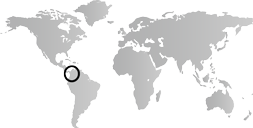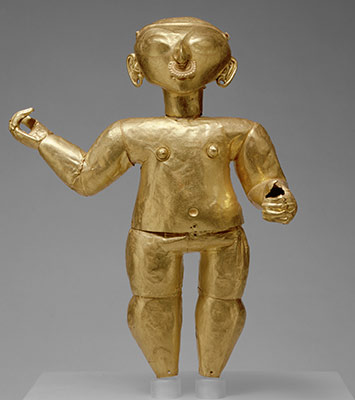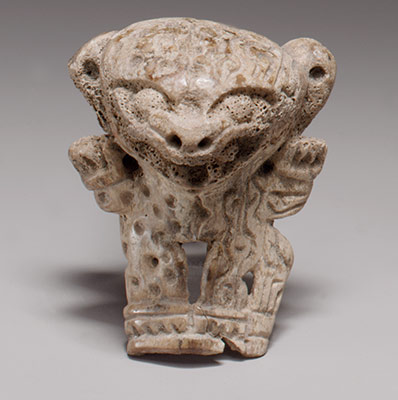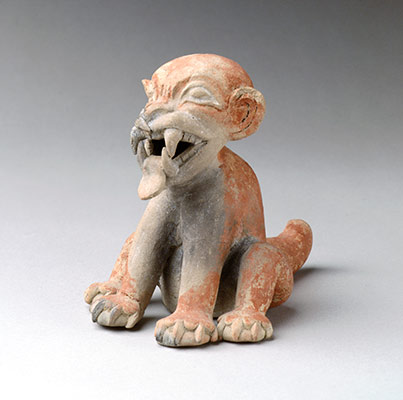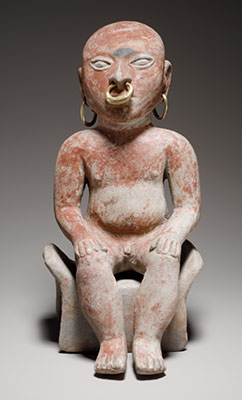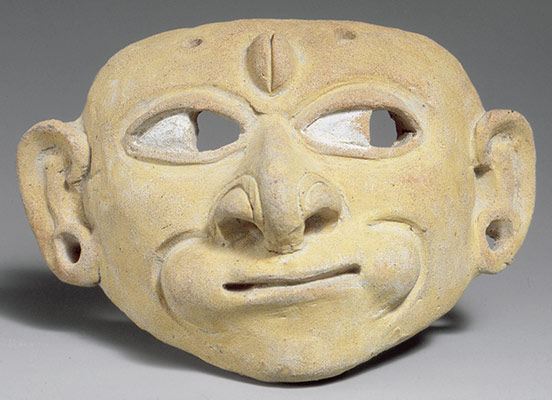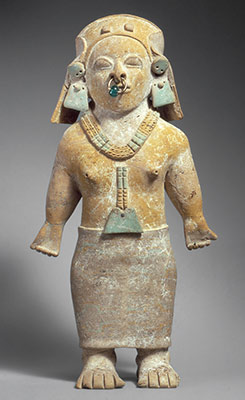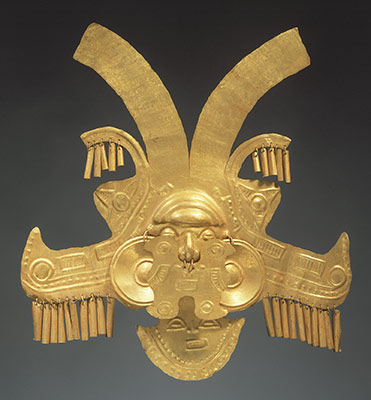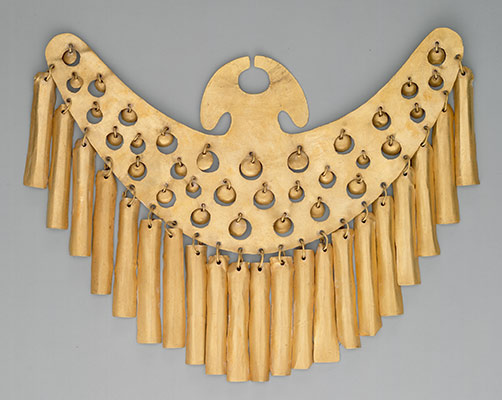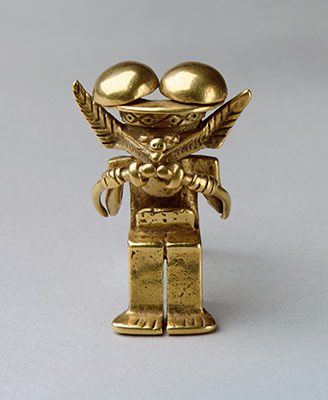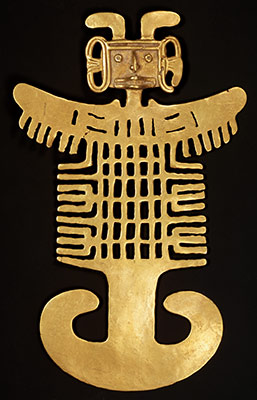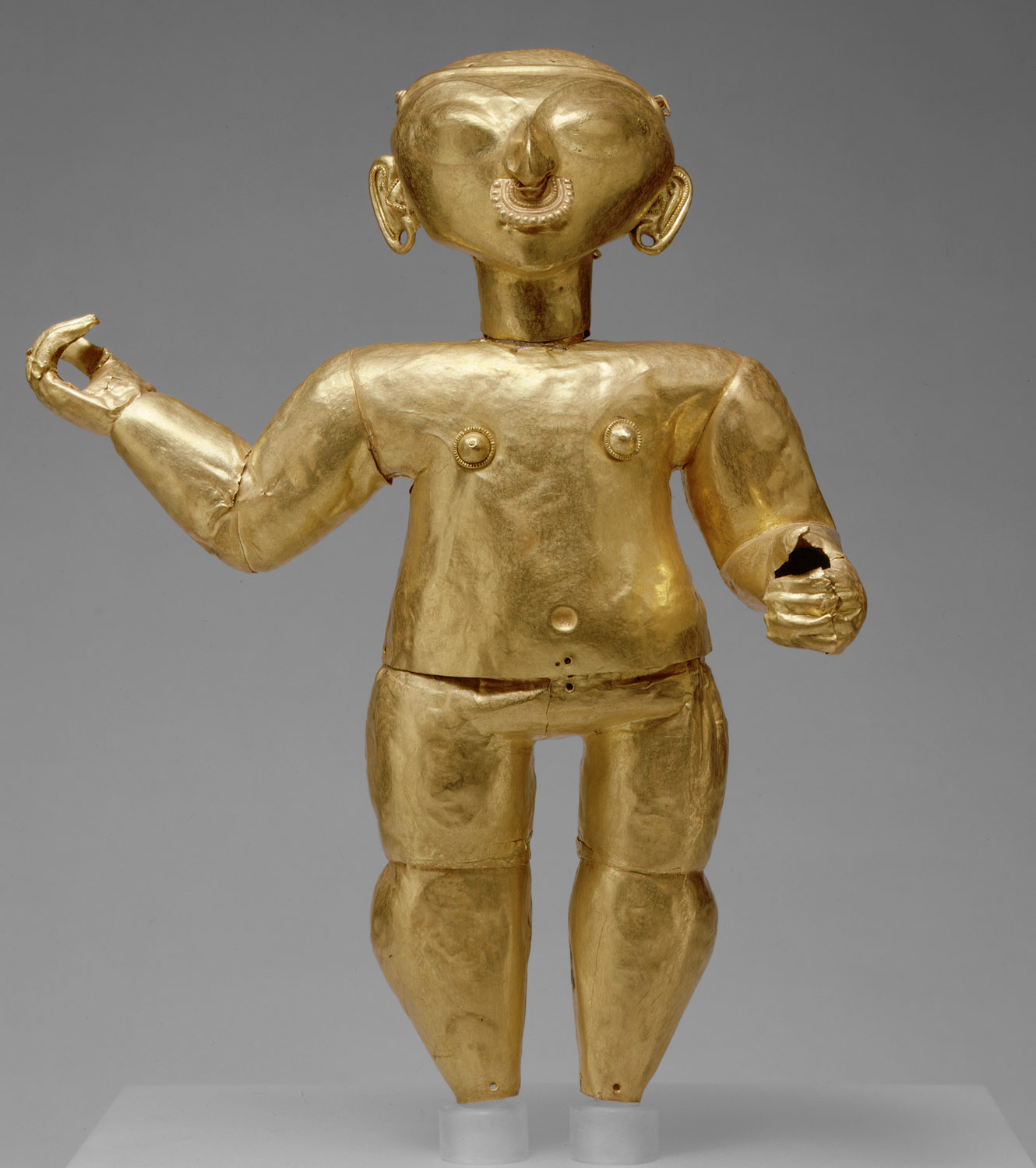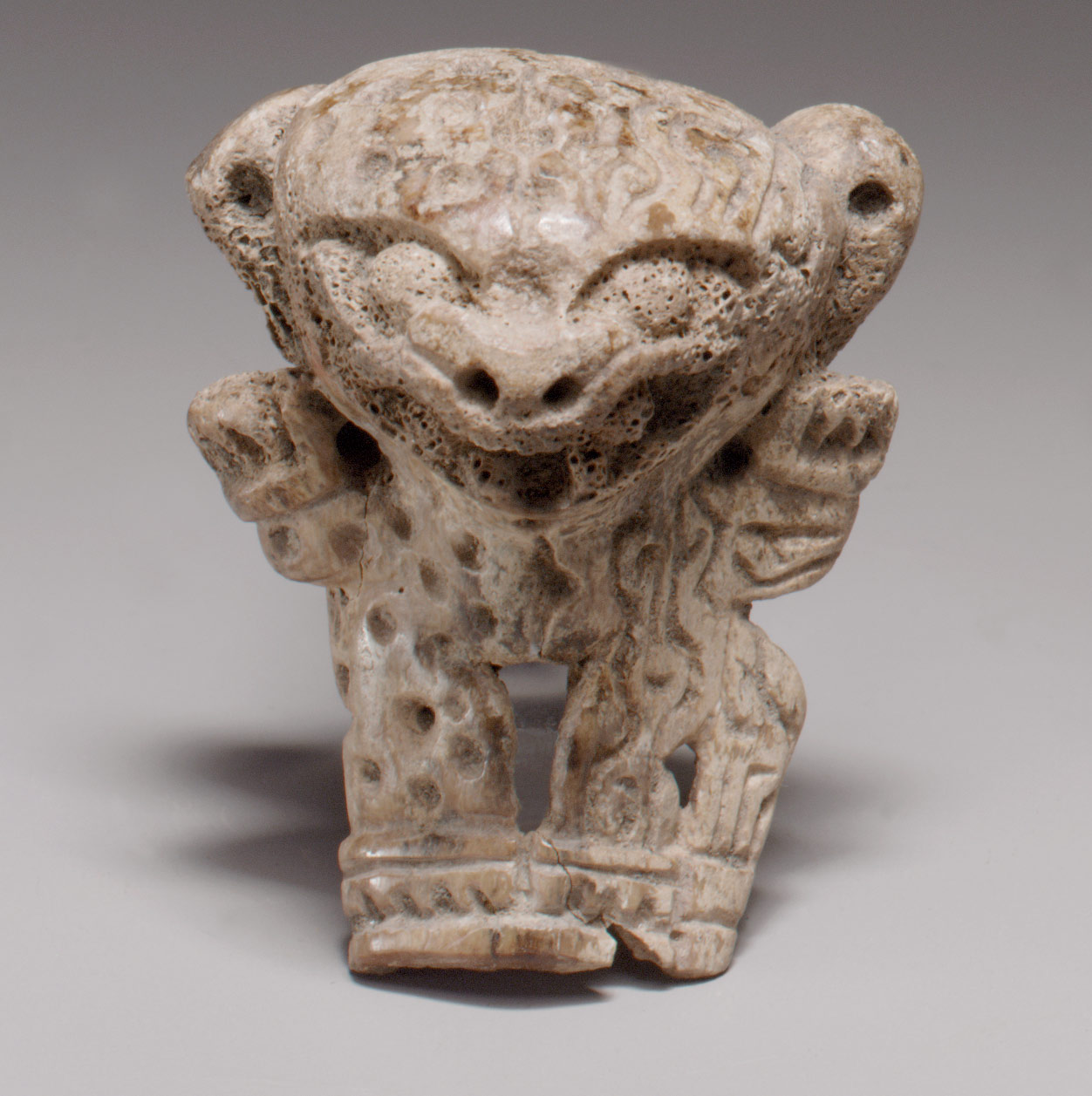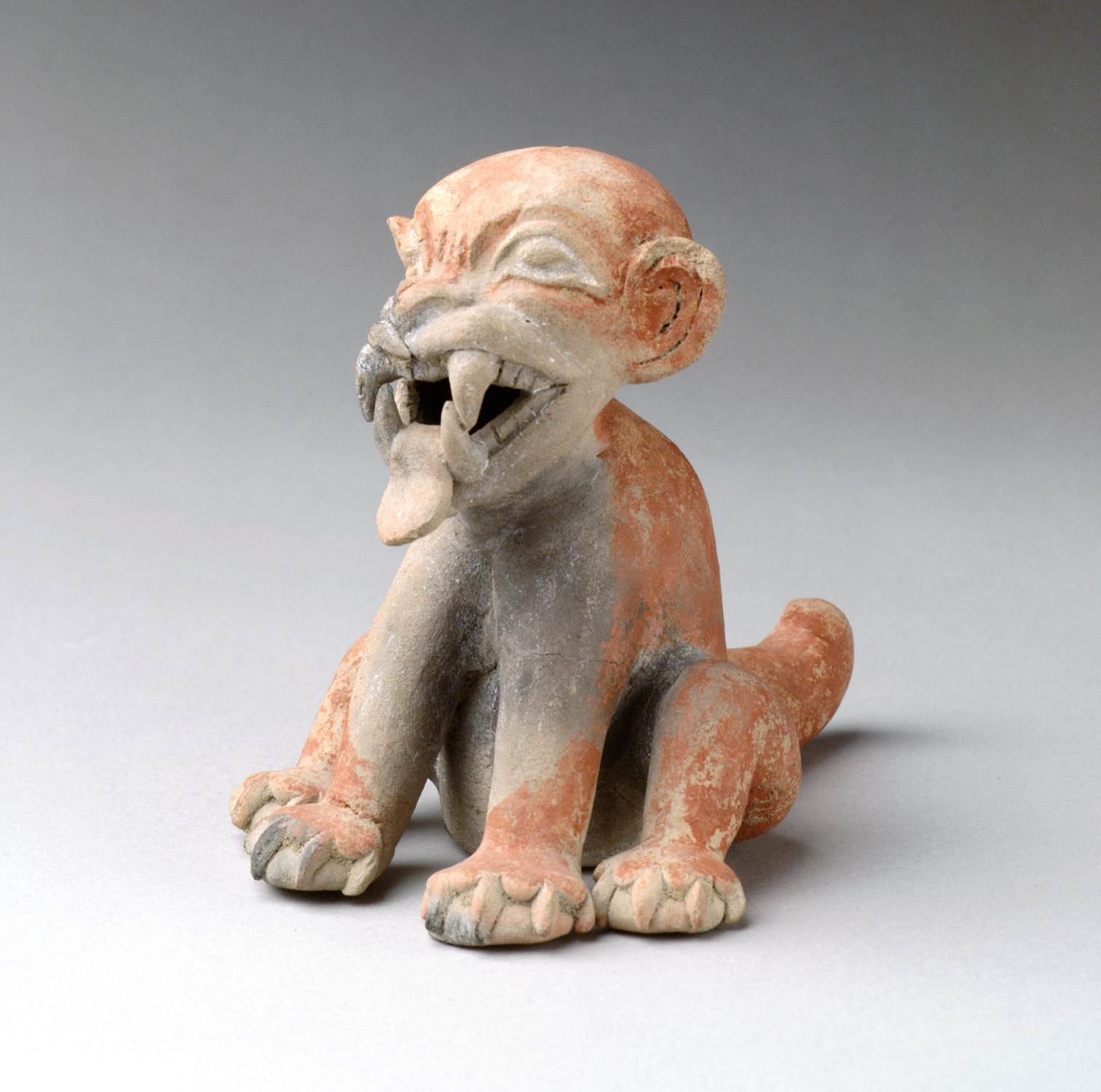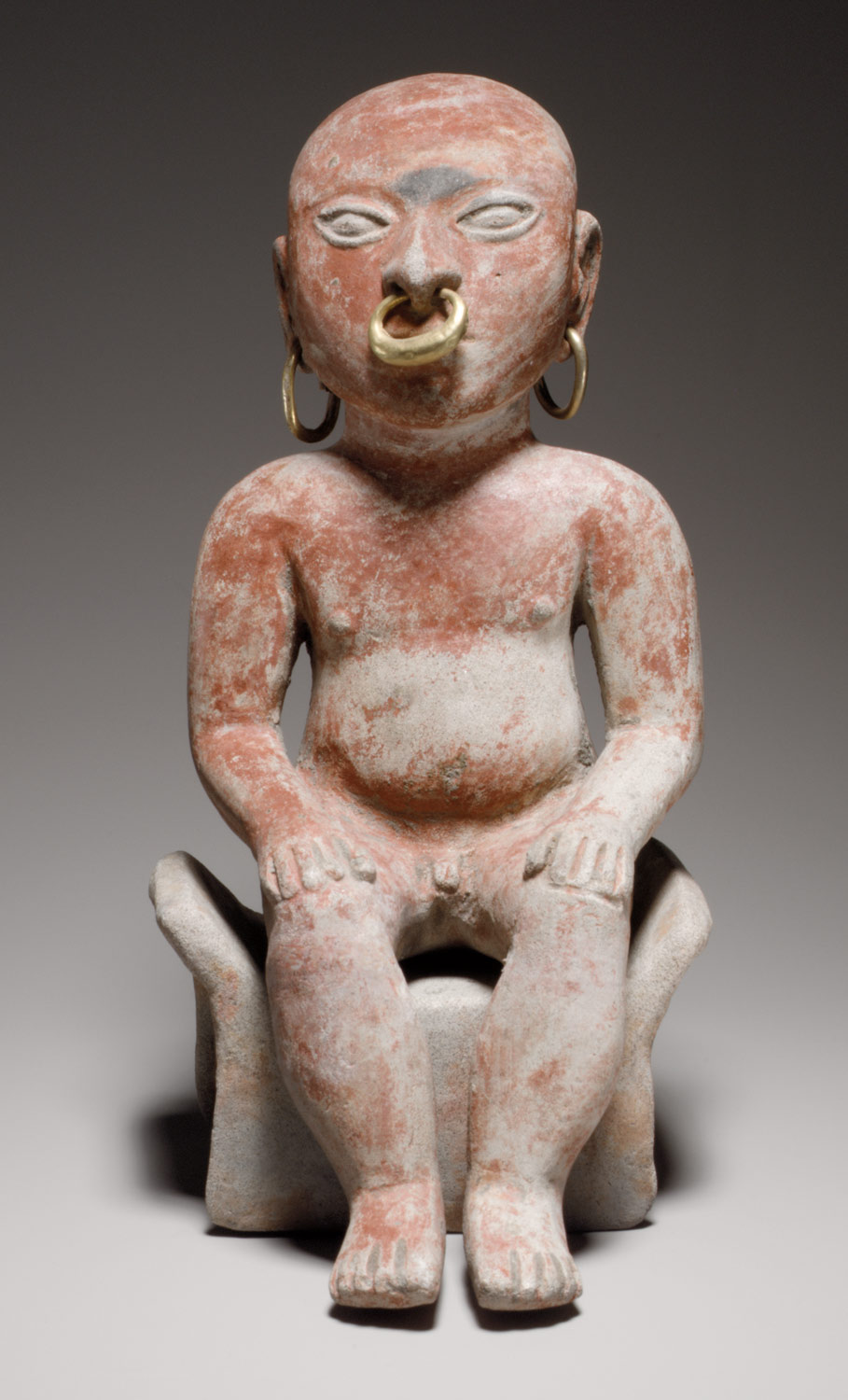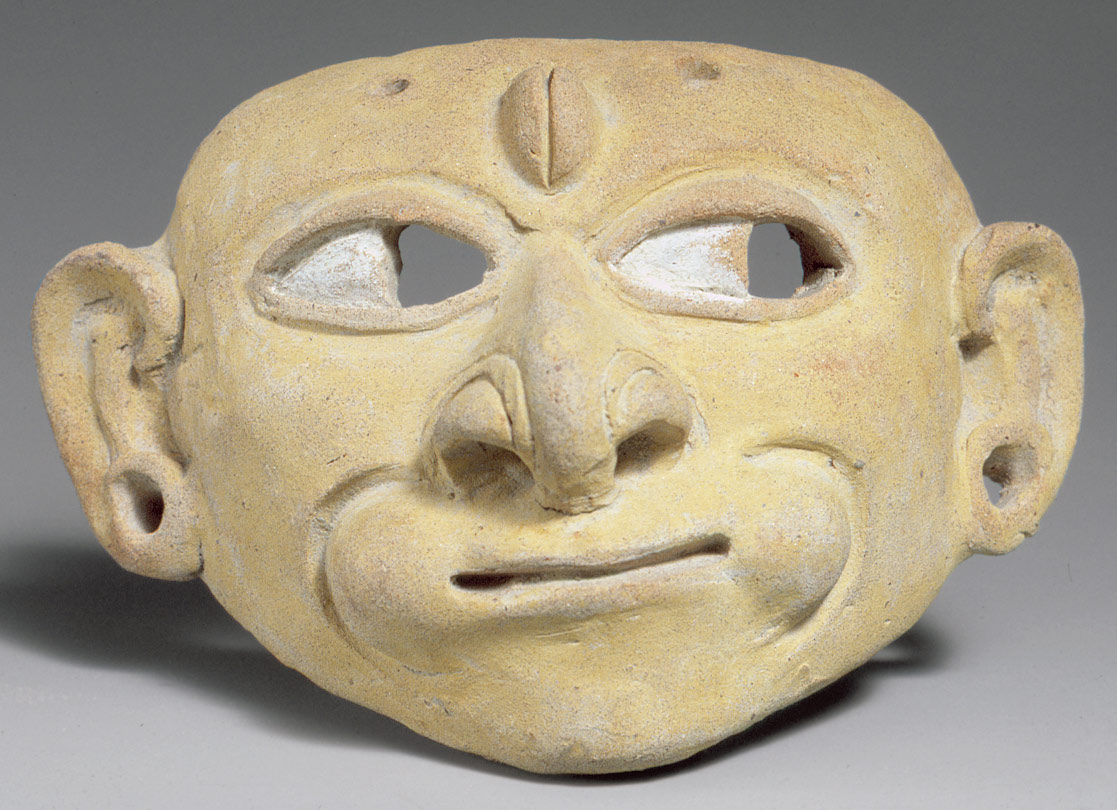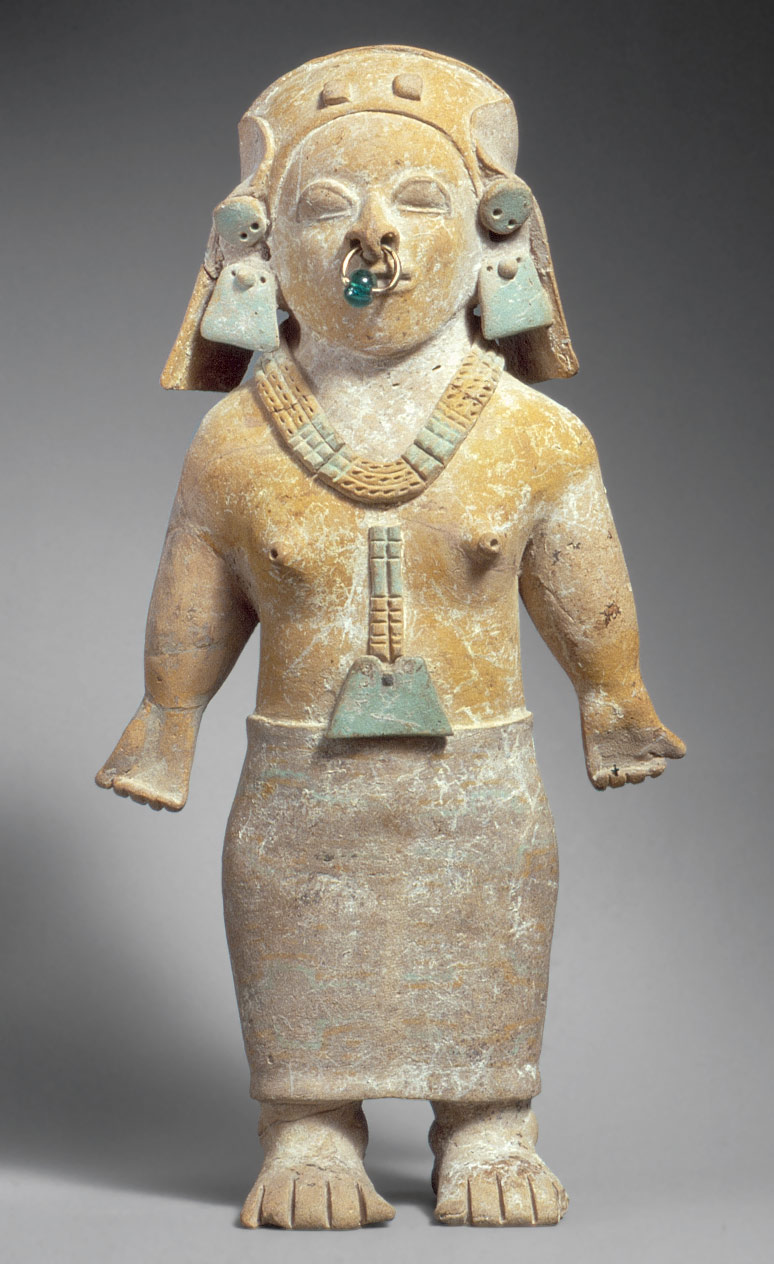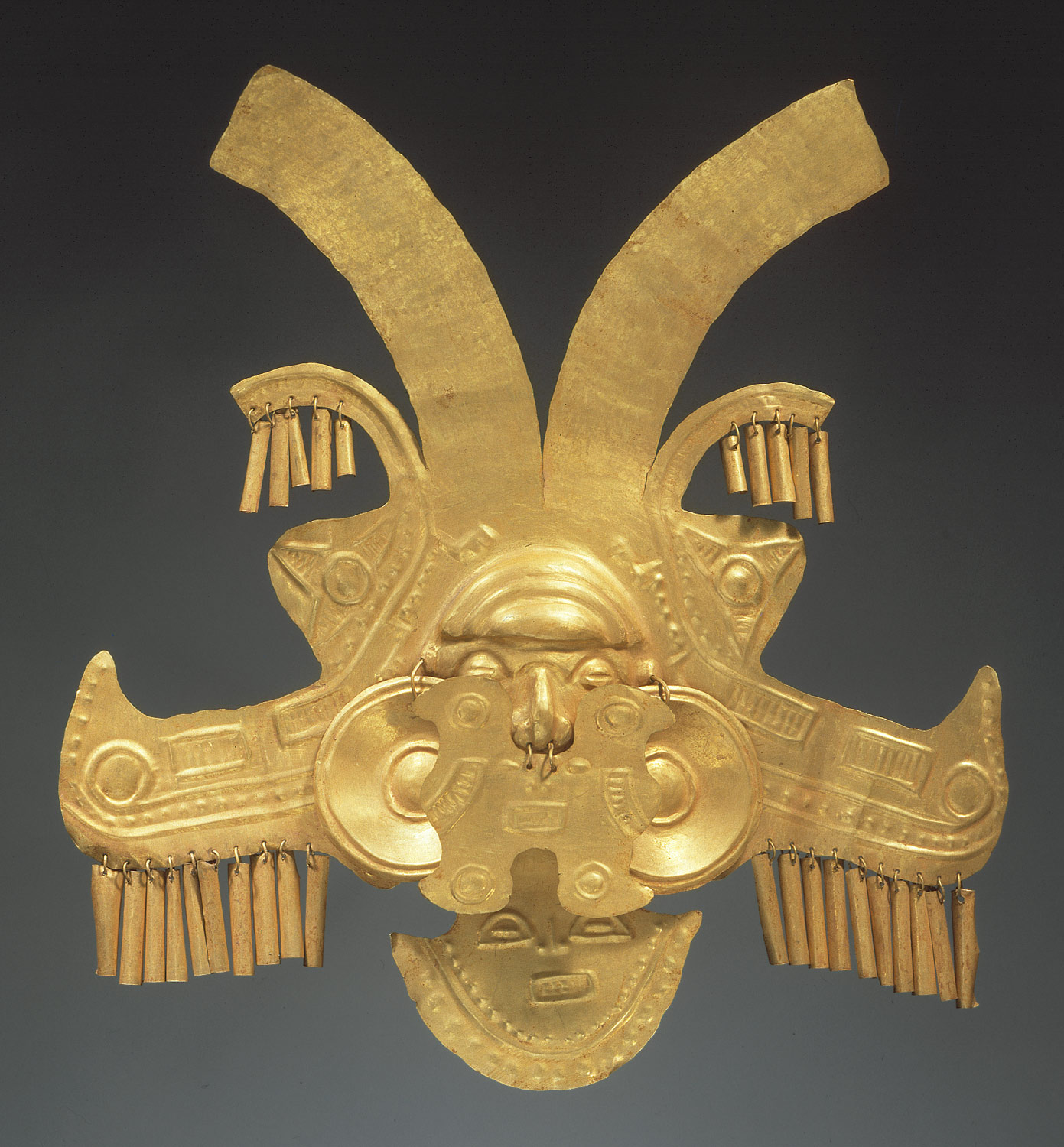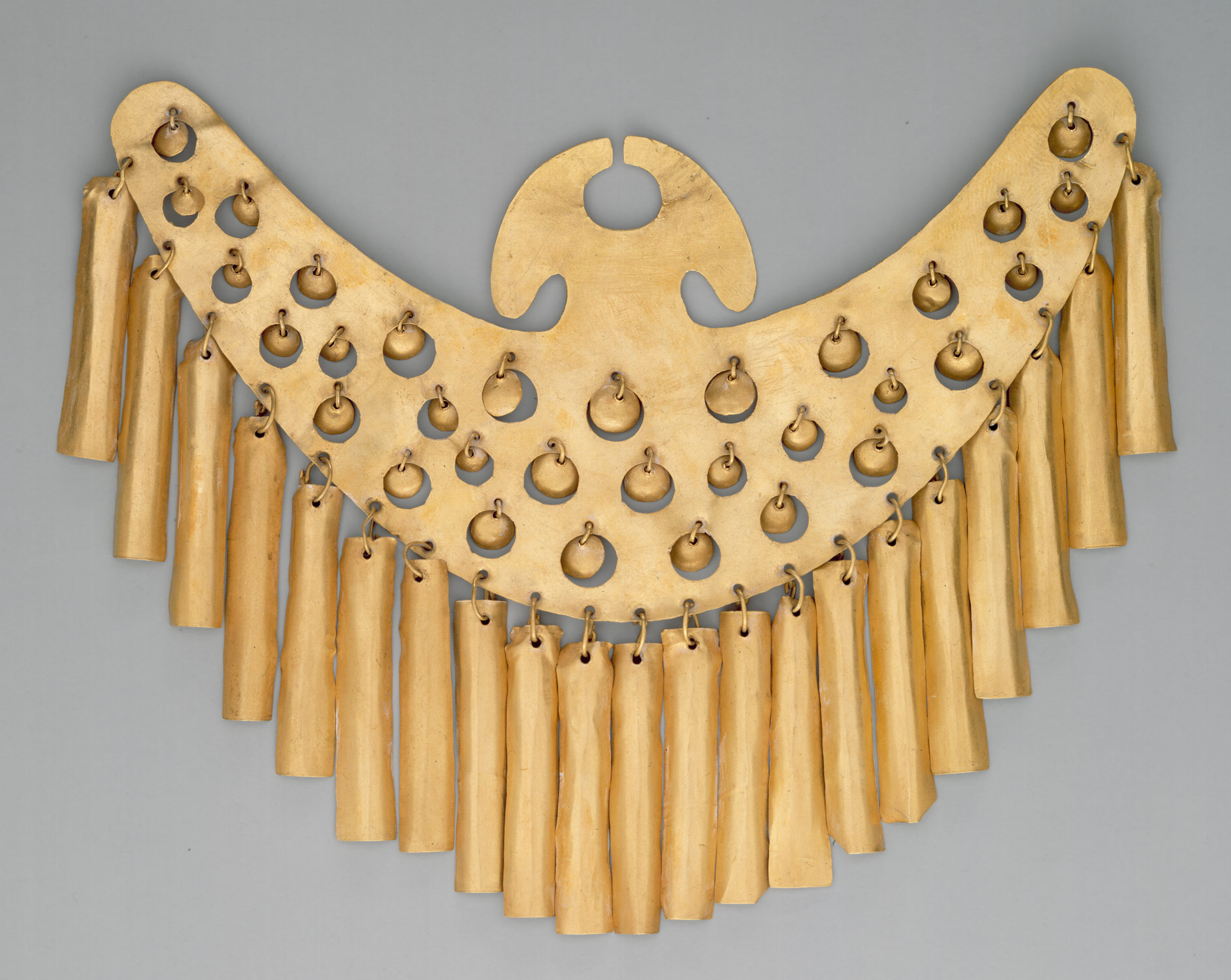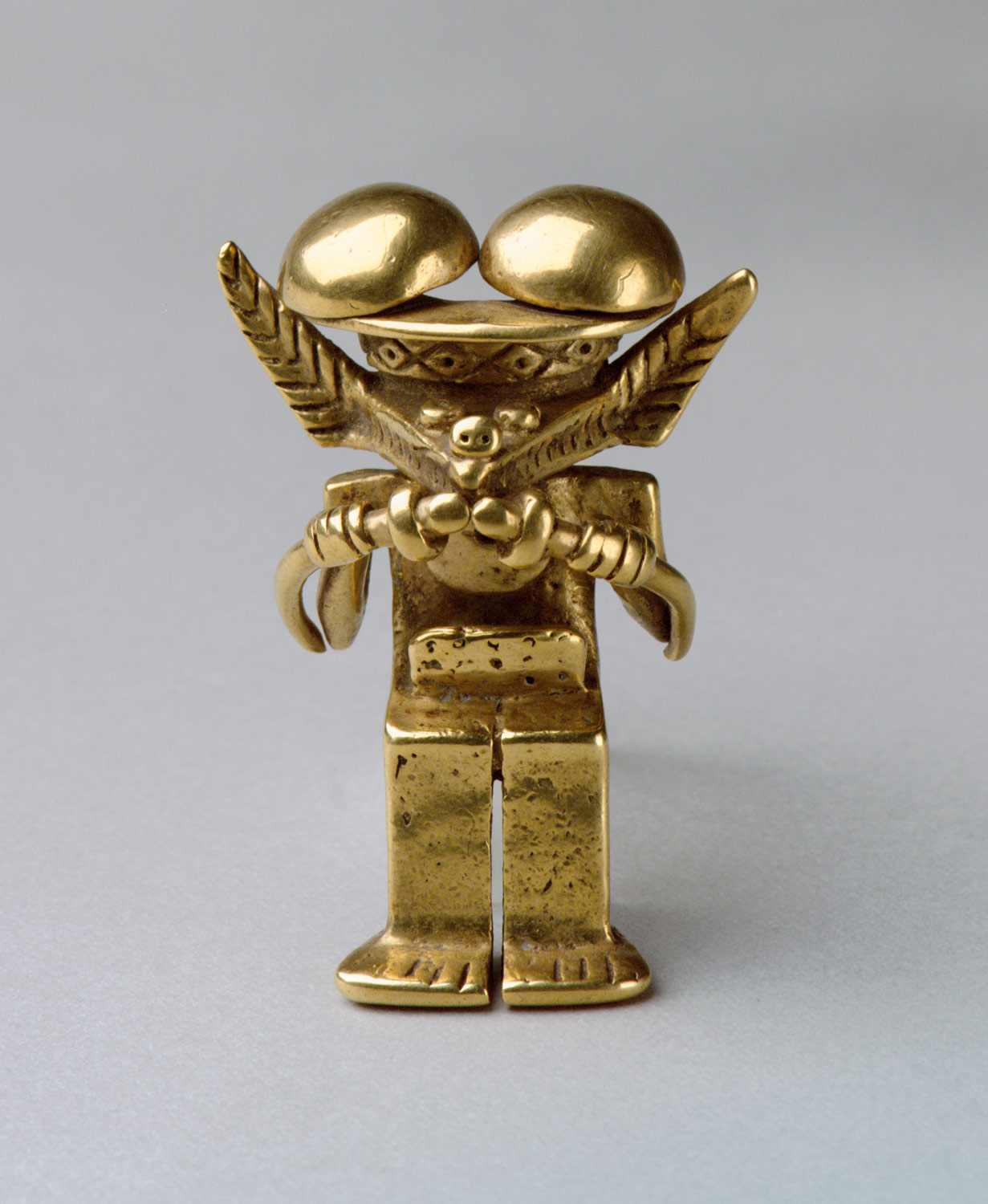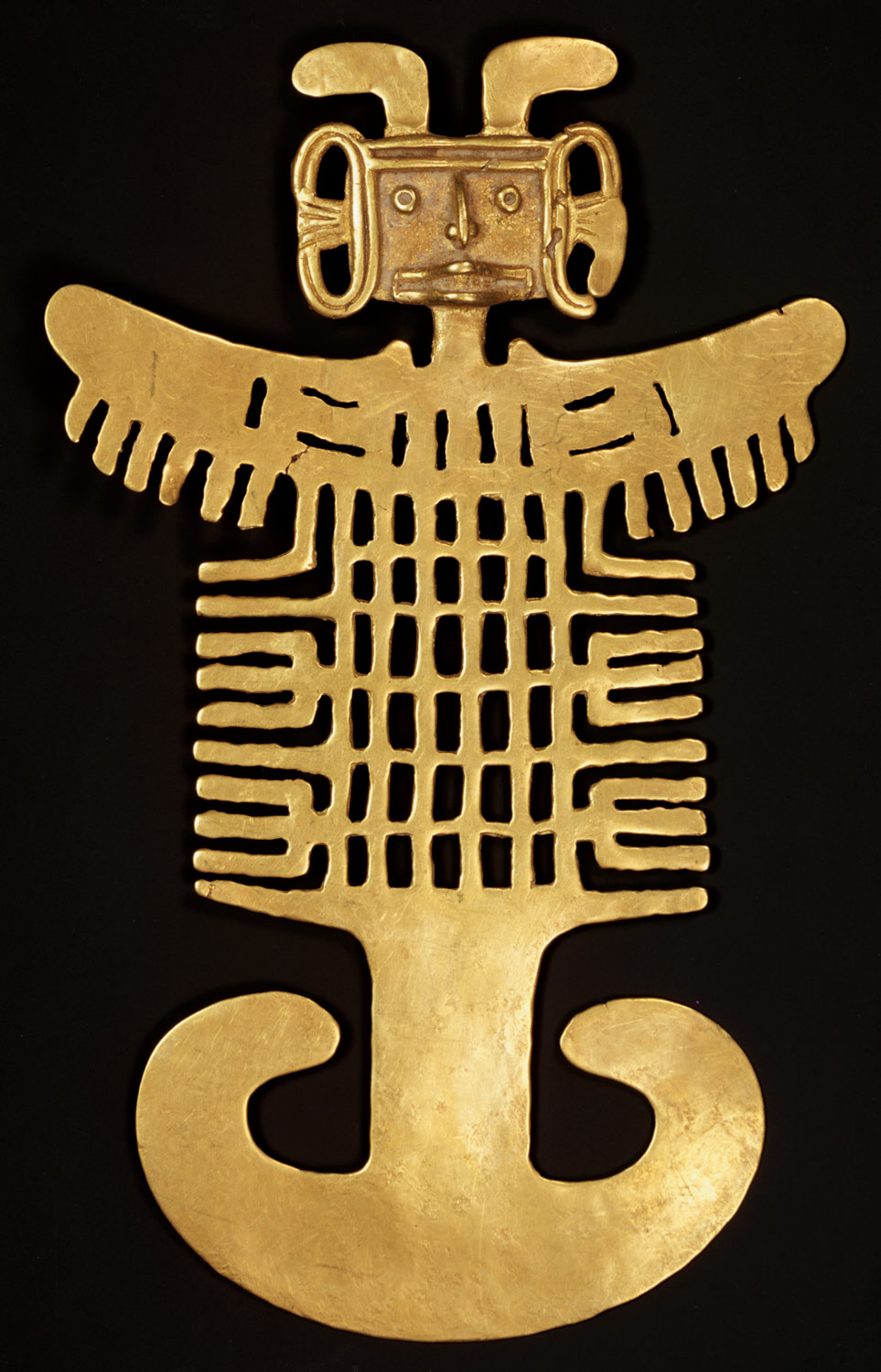Several groups along the Pacific coast of Ecuador, the Caribbean coast of Colombia, and up the Cauca and Magdalena rivers expand their territories and subsequently form chiefdoms. Large quantities of art objects are produced by specialized skilled craftsmen for the elite, who control the resources and productive processes, including assortments of personal adornments in bone, shell, semi-precious stone, and precious metal. Ornamented ceramic vessels, often in the shape of human or animal effigies, as well as stone and ceramic sculptures, some of considerable size, are thought to be evidence of ritual practices and complex religious beliefs. Gold is worked by many groups in Colombia.
Northern Andes, 1–500 A.D.
Timeline
1 A.D.
125 A.D.
NORTHERN COLOMBIA
SOUTHWESTERN COLOMBIA
ECUADOR
125 A.D.
250 A.D.
NORTHERN COLOMBIA
SOUTHWESTERN COLOMBIA
ECUADOR
250 A.D.
375 A.D.
NORTHERN COLOMBIA
SOUTHWESTERN COLOMBIA
ECUADOR
375 A.D.
500 A.D.
NORTHERN COLOMBIA
SOUTHWESTERN COLOMBIA
ECUADOR
Overview
Key Events
-
ca. 100 A.D.
Ceremonial mounds at the site of La Tolita, on Ecuador’s Esmeraldas coast, surround a plaza that is 570 feet wide on three sides. The site covers 0.8 square miles with a population of about 5,000 people, including a ruling class, artisans, and farmers.
-
ca. 150 A.D.
The Jama Coaque people occupy the coastal lowlands of the northern Manabí and southwest Esmeraldas provinces. Close contact with neighbors to the north and south is reflected in ceramic figurines made in molds. Elaborate costumes and ornament details are worked in clay appliqués. Ritual vessel forms include three-dimensional house models and headrests.
-
ca. 200 A.D.
Tolita/Tumaco goldsmiths work platinum by sintering, a process by which small particles of platinum are added to molten gold; the compound is subsequently beaten into malleable sheet.
-
ca. 300 A.D.
The power of the chiefdom of San Agustín in the Andes of southern Colombia extends over an area of about 200 square miles. Earthen mounds cover small tombs lined with stone slabs. Monumental stone guardians feature fanged human figures holding clubs and trophy heads.
-
ca. 300 A.D.
The Zenú people of Colombia’s tropical Caribbean coast construct raised fields and extensive canal systems to drain floodplains. Gold is extensively worked in the area. Lost-wax casting is primarily used for the production of pendants, nose and ear ornaments, and staff heads.
-
ca. 350 A.D.
The ceramic vessels of the Guangala culture in the south of Ecuador’s Manabí Province are decorated with geometric patterns in red and black on cream-colored slip, similar to vessels from the Nicoya region in Costa Rica.
-
ca. 400 A.D.
In central Manabí, the Bahía people make many hollow ceramic figures that are whistles or flutes, or depict individuals playing such instruments. Often painted in bright green, yellow, red, and white after firing, they are probably used in ceremonies.
-
ca. 400 A.D.
Sophisticated metalwork by Ecuadorian specialists of the Bahía, Jama Coaque, and Tolita peoples includes large pectorals and masks of hammered sheet gold embellished with complex imagery done in repoussé. Objects combining gold, silver, and platinum are known.
-
ca. 450 A.D.
Wealthy chiefs of the Yotoco people in the middle Cauca River region of Colombia are laid to rest with impressive gold ornaments and ritual implements; among them are large heart-shaped pectorals and flamboyant head pieces in sheet gold. Many feature repoussé faces with pendant ear disks, nose ornaments, and a multitude of dangles.
-
ca. 500 A.D.
Tolima goldworkers of the middle Magdalena River area produce a distinctive pendant in which anthropomorphic and zoomorphic references are combined. The figure pendants have stylized human faces and splayed arms and legs of equal length and width, bent at the same angle and without anatomical details.
-
ca. 500 A.D.
Tall ceramic amphoras of slender, oblong shape are made by the Tuncahuán peoples of highland Ecuador. Standing over two feet high, the amphoras are finished with geometric designs in negative patterns emphasized with red outlines.
Citation
“Northern Andes, 1–500 A.D.” In Heilbrunn Timeline of Art History. New York: The Metropolitan Museum of Art, 2000–. http://www.metmuseum.org/toah/ht/?period=05®ion=san (October 2004)
Related
Map
